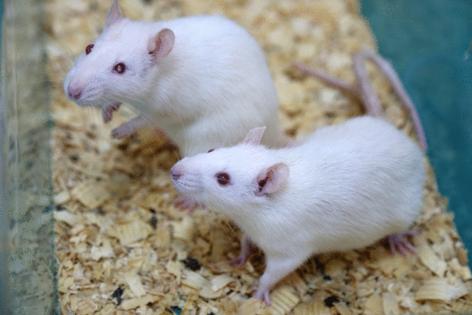Commentary: Millions die while sepsis research stalls -- Here's how we can fix it
Published in Op Eds
September is Sepsis Awareness Month, and in case you aren’t familiar with this terrible condition, sepsis is an extreme and often fatal reaction to infection that kills nearly 11 million people worldwide each year and affects more than 48 million. It’s responsible for 20% of all global deaths, meaning one in five people will die from sepsis.
Despite its staggering toll, there is no dedicated cure. Current treatments focus on supportive care, not reversal or prevention of the condition.
This lack of progress is not due to inaction but to misdirection. For decades, scientists have overwhelmingly relied on experiments on animals, yet not a single targeted, effective drug or treatment for sepsis has emerged. Despite this failure, experimenters still subject animals to cruel and painful procedures that cause suffering, organ failure and death.
Sepsis experimenters most often use mice because they are cheap, plentiful, small and easy to force through testing. But they do not make good stand-ins for humans. Mice respond to sepsis in fundamentally different ways than humans do, making it difficult to reliably translate the findings into human treatments. Other species—dogs, cats, pigs, sheep, rabbits, rats, horses and primates—are also used in sepsis experiments and likewise cannot reproduce all the physiological features of human sepsis.
The failure of animal-based sepsis experiments is well-documented. More than 20 peer-reviewed studies have criticized mouse “models” of sepsis, including a landmark paper in Proceedings of the National Academy of Sciences that compared hundreds of human patient data sets with results from experiments on animals. The conclusion was unequivocal: Humans and mice differ drastically in their genetic responses to serious inflammatory conditions, including sepsis.
In response, the National Institutes of Health (NIH) publicly acknowledged that mice do not accurately model human sepsis. Former NIH Director Dr. Francis Collins described the development of 150 drugs that cured sepsis in mice but failed in human clinical trials as “a heartbreaking loss of decades of research and billions of dollars.” In 2019, NIH’s National Institute of General Medical Sciences announced plans to shift funding toward human-relevant research—a long-overdue change.
State-of-the-art non-animal methods can be used to better study the human condition and aid in developing treatments. In vitro systems using human cells can replicate human-specific immune responses and, when derived from patients, enable personalized studies of sepsis mechanisms and drug responses. By combining organ-on-a-chip technology and computer simulations, researchers can model whole-body interactions with unprecedented precision and integrate data from multiple sources to predict treatment outcomes more reliably than experiments on animals ever could.
To accelerate progress, policy changes are essential. Legislative and oversight bodies can prohibit the use of animals in human sepsis research. Funding agencies can reject grant proposals that rely on using animals for sepsis tests and scientific journals can refuse to publish manuscripts that describe sepsis experiments on animals.
By adopting these forward-thinking measures, we can direct resources toward research that truly reflects human biology, bringing us closer to lifesaving treatments for the millions of patients who need them and ending the needless suffering of animals in failed experiments.
____
Dr. Gabby Vidaurre is a research associate in the Laboratory Investigations Department of People for the Ethical Treatment of Animals, 501 Front St., Norfolk, VA 23510; www.PETA.org.
_____
©2025 Tribune Content Agency, LLC.
























































Comments